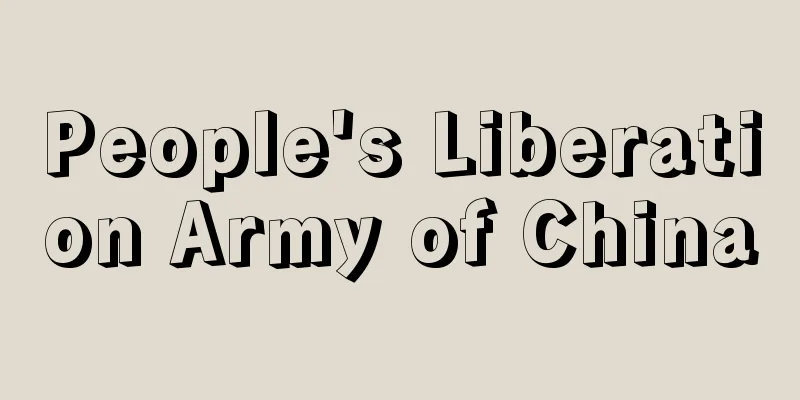Takayoshi Kido

|
A politician during the Meiji Restoration period at the end of the Edo period. A former samurai of the Choshu domain. Along with Okubo Toshimichi and Saigo Takamori, he is one of the "Three Great Men of the Meiji Restoration." He was born on June 26, Tempō 4, to the Wada family, a samurai of the same domain. At the age of seven, he became the heir to the Katsura Kurobei family and was known as Kogoro, but in 1865 (Keio 1) he was given the surname Kido by the domain lord, and changed his name to Kanji, Junichiro, and Shogiku. In 1849 (Kaei 2), he became a disciple of Yoshida Shoin, and later studied in Edo, where he also learned Western-style artillery from Egawa Tarozaemon. After 1858 (Ansei 5), in the aftermath of the Ansei Purge, he interacted widely with Sonno Joi patriots from his own domain as well as from the Satsuma, Mito, and Echizen domains, and worked hard in the Sonno Joi movement. After the Choshu domain was defeated in the Kinmon Incident (Hamaguri Gomon Incident) in 1864 (Genji 1), Takasugi Shinsaku and other anti-Shogunate factions of the Choshu domain gained control of the domain, and he returned to the domain. In the course of negotiating with the various domains, he succeeded in concluding the Satsuma-Choshu Alliance in 1866. After that, he played an active role as one of the representatives of the anti-Shogunate faction. After the Meiji Restoration was realized with the collapse of the shogunate, he served as a government official in the Dajokan (Grand Council of State), serving as a councilor and advisor to the General Affairs Bureau, and participated in drafting the Five Articles of Oath with Yuri Kimimasa and Fukuoka Takachika. He was promoted to councilor in 1870 (Meiji 3), and played a leading role in the establishment of a unified government through the return of the domains and people to the Emperor, and the abolition of the feudal domains and the establishment of prefectures. In 1871, he joined the overseas mission to the United States and Europe led by the extraordinary and plenipotentiary ambassador Iwakura Tomomi, along with Okubo Toshimichi and Ito Hirobumi, and inspected various systems and facilities in foreign countries, including politics, economy, and the military. After returning to Japan in 1873, he opposed the Korean Expedition Theory advocated by Saigo Takamori and others, along with Iwakura and Okubo, and forced them to resign. However, he was critical of the dictatorial government of Okubo that was established shortly after this, and acted as an enlightened bureaucrat within the framework of the government's ruling system. He temporarily resigned from his position as a councilor in opposition to the Taiwan Expedition in 1874, but at the Osaka Conference the following year he compromised with Okubo and the mainstream government faction and returned to his position as a councilor. He later became chairman of the Local Officials' Conference and was also transferred to the position of Cabinet Advisor, but around this time he fell ill and retired from his important position, and died in Kyoto on May 26, 1877, in the midst of the Seinan War. During the process of the establishment of the Meiji state, within the Iwakura-Okubo regime which took the form of the first absolutist government, Kido's consciousness and actions represented an enlightened stance, but he was inferior to Okubo's clear-sightedness in terms of his political ability to see the situation clearly. [Hiromi Ishizuka] "The Kido Biography Compilation Office, ed., 'The Matsukiku Kido Biography,' 2 volumes (1927, Meiji Shoin)" "The Kido Takayoshi Related Documents Research Group, ed., 'Kido Takayoshi Related Documents,' 5 volumes (2005-, University of Tokyo Press)" [References] | | | | the Shogunate|Abolition of the Domains and Establishment of | | the Emperor©Shogakukan Library "> Takamitsu Kido Plenipotentiary Iwakura Tomomi and four deputy envoys. From left, Kido Takayoshi, Yamaguchi Naoyoshi, Iwakura, Ito Hirobumi, and Okubo Toshimichi. The four deputy envoys have their hair cut and are dressed in Western clothes, while Iwakura wears Japanese clothing and Western shoes. Photographed in San Francisco © Shogakukan Library "> Iwakura Mission Source: Shogakukan Encyclopedia Nipponica About Encyclopedia Nipponica Information | Legend |
|
幕末・維新期の政治家。旧長州藩士。大久保利通(おおくぼとしみち)、西郷隆盛(さいごうたかもり)と並ぶ「維新三傑」の一人。天保(てんぽう)4年6月26日、同藩士和田家に出生。7歳で桂(かつら)九郎兵衛家の嗣子(しし)となり、通称を小五郎と称したが、1865年(慶応1)藩主から木戸姓をもらい、貫治、準一郎と改め、松菊と号した。1849年(嘉永2)吉田松陰(よしだしょういん)の門弟となり、その後、江戸に留学、また江川太郎左衛門から洋式砲術を学んだ。1858年(安政5)以降、安政(あんせい)の大獄後の状況のなかで、自藩をはじめ、薩摩(さつま)、水戸、越前(えちぜん)諸藩の尊攘(そんじょう)派の志士と広く交わり、尊王攘夷(じょうい)運動に奔走した。1864年(元治1)禁門(きんもん)の変(蛤御門(はまぐりごもん)の変)で薩摩藩などと戦って長州藩が敗走したのち、高杉晋作(たかすぎしんさく)らの長州藩討幕派が同藩の実権を掌握すると帰藩し、諸藩と折衝する過程で、1866年薩長同盟を締結することに成功。以後、討幕派の一代表として活躍した。 幕府倒壊による明治維新の実現後、政府官僚として太政官(だじょうかん)に出仕、参与、総裁局顧問などを務め、由利公正(ゆりきみまさ)や福岡孝弟(ふくおかたかちか)らと「五か条の誓文(せいもん)」の起草に参加した。さらに1870年(明治3)には参議に昇進し、版籍奉還、ついで廃藩置県を通じて、統一政権の成立に指導的役割を果たした。また1871年には、特命全権大使岩倉具視(いわくらともみ)が率いる米欧遣外使節団に大久保利通、伊藤博文(いとうひろぶみ)らと加わり、外国の政治、経済、軍事などの諸制度や施設を視察した。1873年帰国後、岩倉、大久保らとともに、西郷隆盛らが主張する征韓論に反対して彼らを退け、下野させた。しかし、この直後に成立した大久保の独裁政権には批判的立場を示し、政府の支配体制の枠内で啓蒙(けいもう)官僚として行動した。1874年の台湾出兵に反対して一時参議を辞任したこともあったが、翌年の大阪会議では大久保らの政府主流派に妥協して、再度、参議に復帰した。その後は地方官会議議長に就任し、また内閣顧問に転任したこともあったが、このころから、病気を得て要職から退き、西南戦争の最中、明治10年5月26日京都で死去した。 明治国家の成立の過程で、最初の絶対主義政権の形態をとった岩倉―大久保体制内部にあって、木戸の意識と行動はその開明的立場を代表する側面を示していたが、状況を展望する政治的資質においては明晰(めいせき)な大久保の能力に劣っていた。 [石塚裕道] 『木戸公伝記編纂所編『松菊木戸公伝』全2巻(1927・明治書院)』▽『木戸孝允関係文書研究会編『木戸孝允関係文書』全5巻(2005~ ・東京大学出版会)』 [参照項目] | | | | | | |©小学館ライブラリー"> 木戸孝允 全権岩倉具視と4人の副使。左から木戸孝允、山口尚芳、岩倉、伊藤博文、大久保利通。副使4人は断髪・洋服姿、岩倉は和服に洋靴を履く。サンフランシスコで撮影©小学館ライブラリー"> 岩倉使節団 出典 小学館 日本大百科全書(ニッポニカ)日本大百科全書(ニッポニカ)について 情報 | 凡例 |
Recommend
Advisory body - Simon Kikan
An administrative body that has the authority to ...
Upstream (oil) - Upstream
The upstream sector is the industry that explores...
Chong Xian
[Born] Taiping Xingguo 5 (980) [Died] Koyu 4 (1052...
Reverse pitch propeller
…When the propeller of a broken engine on a multi...
tapkar
…(1) Niwen‐apkas (rough walking): When something ...
Golden line crab - Matuta lunaris
A crab of the family Carappa (Crustacea) that live...
Europhielia
…(3) South Africa and Madagascar There are few ge...
Stain - Sutein (English spelling)
A type of finish that brings out the beauty of th...
Protium
…However, the stable and widely occurring 2H is u...
Akamatsu Man'yu Umenoshirahata
...In the play, Mitsusuke is named "Akanuma ...
On the Economic Theory of Socialism
…Based on Marxism, he conducted research into mod...
Caucus (English spelling)
An informal meeting (caucus) of prominent members ...
Search for the Gods - Search for the Gods
A book of mysterious stories from the Six Dynasti...
Offshore stevedore - Okinakashi
A stevedore. Today, stevedores are the norm, and ...
Etheria
A secret society that sought freedom, liberation, ...






![Urayasu [city] - Urayasu](/upload/images/67cb01297cb13.webp)


